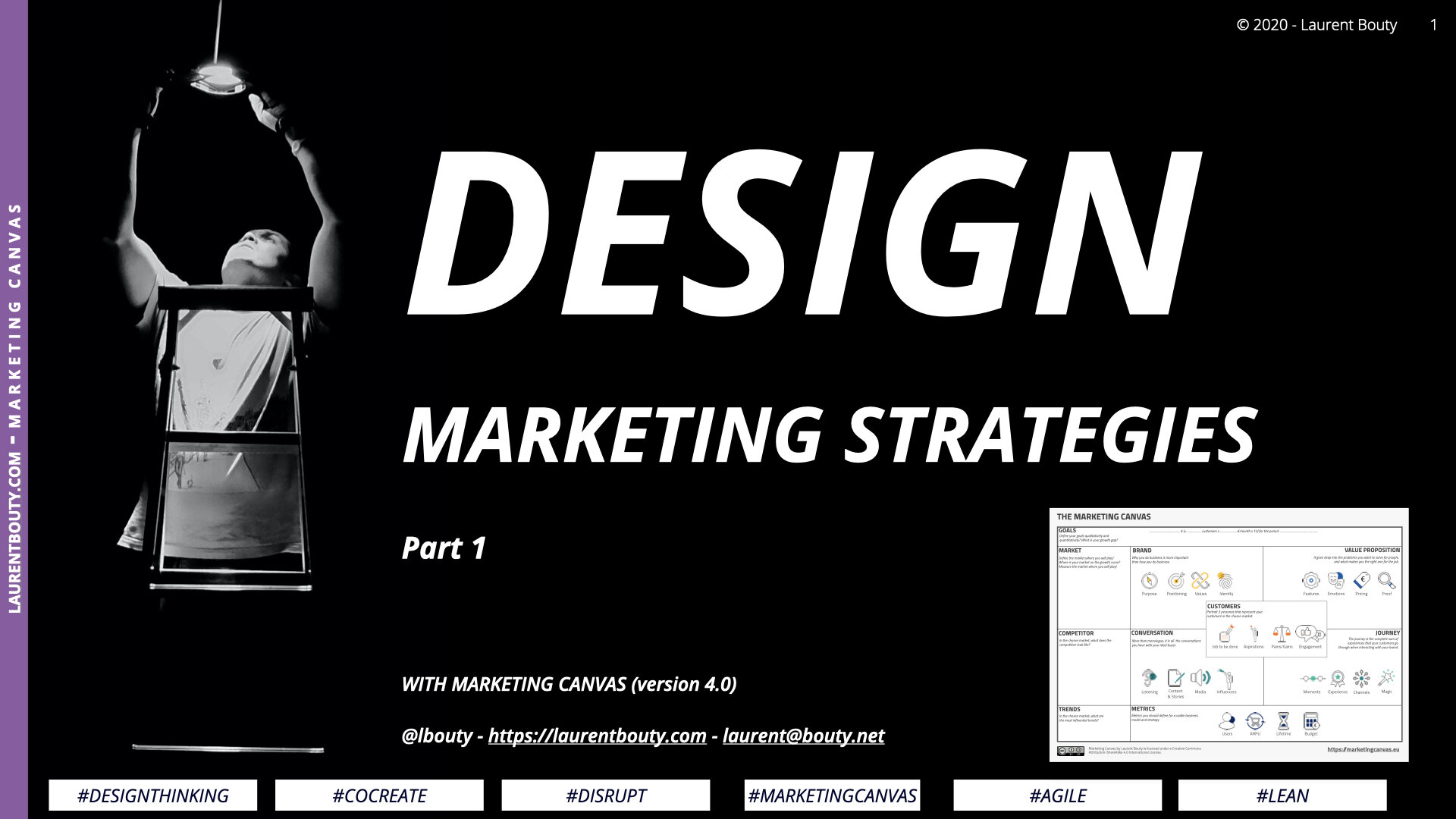Last update: 10/06/2023
In a nutshell
This article offers an in-depth exploration of 'Moments' in the marketing journey - crucial touchpoints that define customers' interactions with your business. From discovering your product to post-purchase stages, these Moments shape customer perception and engagement. We delve into how to identify and understand these Moments, employing strategies like Google's SEE-THINK-DO-CARE framework. The piece also covers evaluation methods for your Moments strategy, offering a scoring system that helps businesses pinpoint areas of improvement. Through a real-world example, it illustrates how this concept can be applied practically, fostering effective, empathetic marketing strategies. This article is a must-read for marketers, entrepreneurs, and anyone eager to enhance their customer experience and overall business success.
In the Marketing Canvas
The Marketing Canvas is a powerful tool for entrepreneurs and non-marketers to build a robust marketing strategy. It consists of six meta-dimensions, each with four sub-dimensions, for a total of 24 sub-dimensions defining your Marketing Strategy. One of these sub-dimensions is MOMENTS, which falls under the JOURNEY meta-category
Defining Moments
Defining the "Moments" in a customer's journey involves identifying all the pivotal touchpoints a customer engages with when interacting with your brand or product. These touchpoints, or moments, could facilitate discovery, breed interest, allow for trial usage, enable purchasing, or encourage further utilization of your product. Moments also cover areas such as recurrent payments, lodging complaints, and the potential exit of customers - and it is always better to part ways on good terms.
Crucially, these moments are defined from the customer's perspective, reflecting their actions, behaviors, and experiences, rather than what your company intends or anticipates. The process of identifying these moments, therefore, is non-linear, involving a complex interplay of divergent and convergent activities. Excellent customer experiences are rarely an accident; they result from meticulous attention to these moments.
For instance, Google's framework for Moments adopts a SEE-THINK-DO-CARE model, while others exist with similar approaches. Note that these moments do not represent physical entities like websites, shops, or sales agents. Instead, they embody the customer's interactions with these entities. For example, in the automobile industry, the moment between ordering a car and receiving it - a period marked by anticipation and expectation - is critical. Inadequate communication during this interval could negatively impact the brand relationship.
Micro-moments, as conceptualized by Google, refer to instantaneous, intent-driven decisions occurring within real-time frames. They capture the immediate needs and wants of customers such as "I need a spare tire now," or "I want a coffee now." Understanding these moments requires empathy and observation, often achieved through techniques like ethnography.
To identify these moments:
Begin with the perspective of the customer. Consider their job-to-be-done, aspirations, pains & gains, and engagement levels.
Construct a mental model map.
Group similar elements into key Moments.
For each Moment, discern the Feeling/Thinking/Doing state of your customer. What are their motivations, actions, and emotional states?
List the places (touchpoints) the customer visits during each Moment.
Tools for Moments
To map out these moments in the customer's journey, several tools are available. Customer Journey Mapping (CJM) is a robust visualization technique for understanding and addressing customer needs and pain points. Another tool is Empathy Mapping, which can be instrumental in discerning the emotional and cognitive states of customers at each moment. Service Blueprints can help visualize processes and identify potential areas for improvement.
Similarly, Ethnographic Observation and interviewing techniques can provide critical insights into the customer’s environment, behaviors, and preferences. Tools such as Experience Sampling Method (ESM) can help gather rich data about the customer’s experiences in real-time. Digital analytics tools are also invaluable for tracking online user behavior, preferences, and engagement
Mental Models - Moments in the Marketing Canvas
Translating Moments into Action
Once you have mapped out and understood the Moments in the customer's journey, the next step involves translating this knowledge into actionable strategies.
Personalization: Tailor customer interactions to align with their specific needs, preferences, and behaviors at each Moment. The key is to make the customer feel understood and valued.
Problem-solving: Identify Moments where customers experience difficulties or dissatisfaction. Develop solutions to address these issues.
Communication: Optimize communication strategies to match the customer's expectations at each Moment. This could involve proactive updates, reminders, personalized messages, or efficient problem resolution.
Anticipating needs: Utilize insights gained from the Moments to predict and fulfill the customer's future needs.
Evaluation and Improvement
Are the MOMENTS of your user journey helping you achieve your goals?
Evaluate your Moments strategy using the following statements, rating your agreement from -3 (completely disagree) to +3 (completely agree):
Your moments have been defined based on customer observations and interviews, accurately reflecting their identity.
You have identified all moments before, during, and after buying your value proposition.
For each moment, you have clearly identified what your customers think, feel, and do.
For each moment, you have clearly identified the customer objectives.
Your strategies align with the identified Moments, providing personalized and effective customer experiences.
Look for areas of improvement where scores are low. For instance, if you find gaps in understanding what customers think, feel, or do, invest more in ethnographic research or interviews. If certain Moments are not covered, reevaluate your journey mapping.
Green Clean Use Case
Consider the example of 'Green Clean,' a hypothetical eco-friendly cleaning products company. In Green Clean’s case, crucial Moments could include discovering the product online or in-store, seeking more information about the environmental benefits, trialing the product, comparing it with non-eco alternatives, purchasing, and recurrent usage.
Particular attention must be paid to Moments when customers might face difficulties or doubts, such as understanding the ecological impact, or during price comparisons with cheaper, non-eco alternatives. Addressing these Moments effectively could involve strategies like information labels detailing environmental impact, or customer testimonials about long-term cost savings and health benefits.
Conclusion
In sum, effectively managing Moments in the customer journey necessitates deep customer understanding, strategic problem-solving, and continuous improvement. Moments offer a window into the customer's world - illuminating their needs, expectations, and experiences. By proactively identifying and addressing these Moments, businesses can cultivate meaningful connections with customers, enhancing satisfaction, loyalty, and ultimately, business success.
Sources
Mental Models, Wikipedia, https://en.m.wikipedia.org/wiki/Mental_model
Google, Micro-Moments, https://www.thinkwithgoogle.com/marketing-resources/micro-moments/micro-moments-understand-new-consumer-behavior/





































